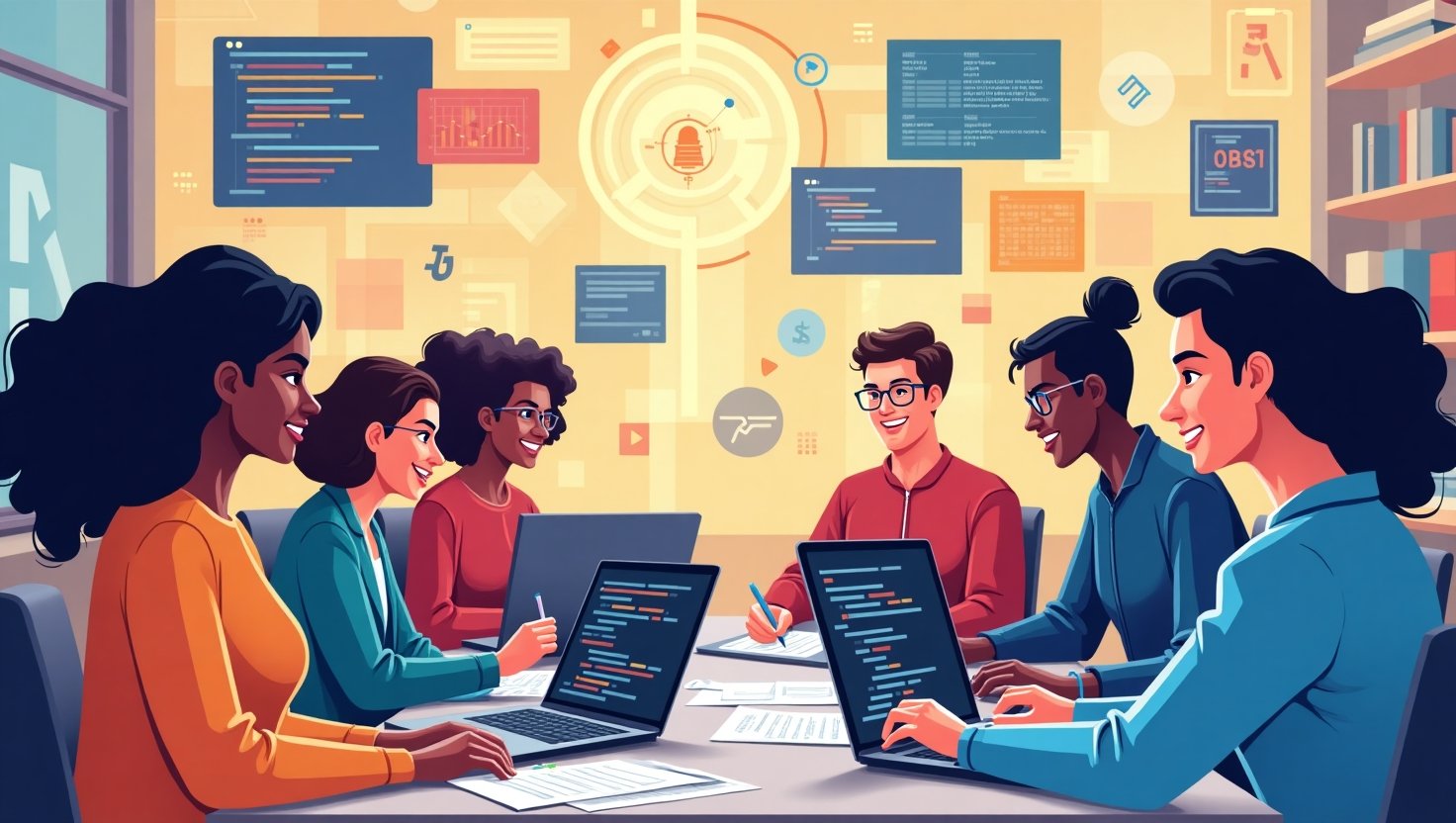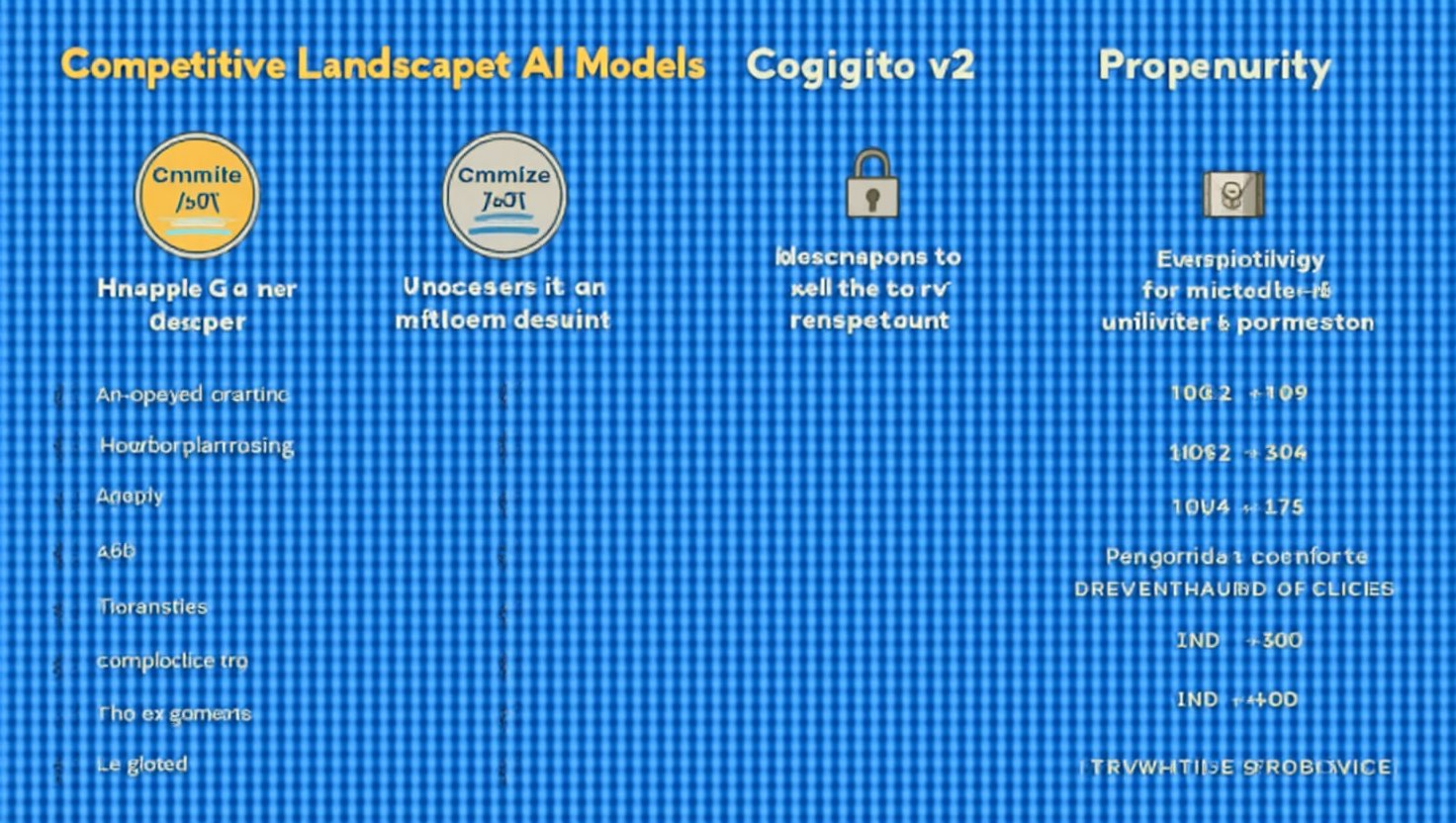In an era where artificial intelligence continues to redefine the boundaries of technology, open-source AI innovations are at the forefront of this transformation. Among these advancements, Deep Cogito has made significant waves with its recent release of Cogito v2, a remarkable suite of models that enhance their own reasoning capabilities. As the demand for smarter, more efficient algorithms grows, the importance of open-source AI becomes increasingly evident.
Unlike proprietary systems, open-source frameworks promote collaboration and transparency, enabling researchers and developers to drive advancements collectively. Historically, the field has seen a shift towards complex models that can perform hybrid reasoning, pushing the limits of what AI can achieve. Cogito v2 exemplifies this movement, illustrating not just increased computational power but a deeper understanding of reasoning processes, positioning itself as a compelling alternative to closed-off AI systems.
Join us as we explore the pivotal role of Deep Cogito’s innovations in shaping not only advanced reasoning models but also the future landscape of open-source AI.


Deep Cogito’s recent release of the Cogito v2 family marks a major advancement in the realm of open-source AI. The lineup includes four distinct models: 70B, 109B, 405B, and the flagship 671B model, which is heralded as one of the most powerful open-source AIs available today. This not only positions Deep Cogito favorably against proprietary systems but showcases a commitment to delivering high-quality models without the exorbitant costs often associated with cutting-edge technology—the entire development cost being below $3.5 million.
A significant innovation of the Cogito v2 series lies in its enhanced reasoning capabilities. The models are built to facilitate an internalized reasoning approach, allowing them to anticipate outcomes effectively without exhaustive searches. As Ryan Daws, a representative of Deep Cogito, stated, “The goal is to build a stronger ‘intuition’, allowing the model to anticipate the outcome of its own reasoning without having to perform the entire search.” This insight highlights how Cogito v2 stands out from traditional models, which often require complex reasoning chains.
Notably, the reasoning chains of Deep Cogito’s models are reportedly 60% shorter than those produced by competitors like DeepSeek R1. This increased efficiency not only enhances performance but significantly improves the usability of the models across various applications, from image reasoning to complex decision-making tasks. In an AI landscape where speed and accuracy are paramount, such innovations provide a decisive edge.
Deep Cogito’s commitment to open-source principles resonates throughout their operations, ensuring that future models will similarly embrace transparency and accessibility. Their push towards creating hybrid reasoning AI models exemplifies a broader trend of seeking superintelligence while encouraging collaborations that foster advancements in the AI community. By prioritizing openness, Deep Cogito allows researchers and developers to build upon their improvements, pushing the envelope of what hybrid reasoning AI models can achieve.
In conclusion, as the field of artificial intelligence continues to evolve rapidly, Deep Cogito’s innovations in the Cogito v2 family represent not just a leap in performance but a foundational pillar for future advancements in open-source AI. The battle for supremacy in AI development is not just about who builds the most powerful system—it’s also about who allows the community to thrive alongside them.
| Model Name | Number of Parameters | Unique Features |
|---|---|---|
| Cogito v2 70B | 70 Billion | Compact configuration suitable for lightweight applications |
| Cogito v2 109B | 109 Billion | Enhanced reasoning capabilities with faster processing speeds |
| Cogito v2 405B | 405 Billion | Advanced internalized reasoning with reduced search complexity |
| Cogito v2 671B | 671 Billion | Highest performance with superior reasoning and prediction accuracy |
Analysis of the Significance of Open-Source Advances in AI
Open-source advancements in artificial intelligence (AI) are reshaping the industry landscape, posing significant implications for development costs, innovation, and the competitive edge regarding proprietary models. Particularly noteworthy is the advent of open-source initiatives like Deep Cogito’s Cogito v2, which significantly enhances reasoning capabilities while maintaining development costs under $3.5 million.
Challenging Traditional Models
These open-source AI resources not only provide high computational power but also challenge traditional AI development models, which often rely on proprietary structures limited by high cost barriers and restricted access. For instance, the 671B model of the Cogito v2 lineup showcases how open-source frameworks can compete directly with established players by prioritizing community collaboration and resource sharing.
In traditional proprietary systems, costs can escalate quickly, resulting in significant barriers to entry for smaller organizations or individuals. Open-source platforms dismantle these barriers, democratizing access to robust AI capabilities and enabling diverse contributors to influence advancements. This shift transforms the competitive landscape, as smaller developers can now harness powerful AI tools without the associated financial toll typically exceeding millions.
Cost Implications
The figures speak for themselves: a transition from proprietary models to open-source alternatives can lead to cost reductions ranging from 5 to 29 times less (source). By making AI accessible to a broader range of users—from startups experimenting with models to researchers seeking innovative solutions—open-source opens pathways for creativity and experimentation. These lower development costs inspire new projects, products, and services, catalyzing advancements that benefit the entire ecosystem.
Community-Driven Innovation
Open-source AI’s collaborative nature significantly boosts innovation. Communities around these projects thrive on knowledge-sharing, enabling rapid iteration and improvement of existing models. This shared development enhances model reliability and performance, which are essential for applications requiring advanced reasoning skills, such as image reasoning and decision-making tasks.
Models like Llama from Meta have illustrated the power of an open ecosystem where users—from researchers to businesses—engage and contribute to the ongoing evolution of AI technology (source). With millions of downloads, the community surrounding such models cultivates innovation, leading to tailored applications that support various industries.
In conclusion, the emergence of open-source AI advancements represents a significant turning point in the industry, with implications extending well beyond cost efficiencies. By embracing collaboration and accessibility, these initiatives not only challenge traditional development paradigms but also inspire a new wave of innovation and creativity within the AI landscape. As organizations continue to recognize the advantages offered by open-source frameworks, the future of AI may very well be grounded in shared knowledge and communal progress.

User Adoption Trends of Open-Source AI
Recent trends indicate a significant surge in the adoption of open-source AI models across various industries, primarily driven by factors such as cost-effectiveness, flexibility, and the ability to customize solutions.
User Growth Statistics:
- A study by the Linux Foundation, commissioned by Meta, revealed that nearly 90% of organizations integrating AI into their operations utilize open-source technologies. source
- As of 2025, 64% of newly released generative AI models are open-source, marking an increase from 51% the previous year. source
- The Hugging Face platform hosts over 155,000 open-source models, reflecting the growing repository of accessible AI tools. source
Key Areas of Application:
- Open-source AI is making significant inroads in sectors like manufacturing and healthcare. In manufacturing, the flexibility of open AI models allows seamless integration into complex operational workflows. In healthcare, these models aid in patient diagnostics and early disease detection, providing cost-effective solutions for resource-limited environments. source
- Small and medium-sized businesses (SMBs) are leveraging open-source AI to develop custom applications, enhancing competitiveness and innovation. For instance, WriteSea, a Tulsa-based SMB, utilized Meta’s Llama model to enhance job placement solutions, citing cost savings and data security as primary benefits. source
User Demographics:
- Developers are at the forefront of open-source AI adoption. A survey indicates that 66% of developers building AI-powered applications prefer open-source models, with this preference consistent across both professional (67%) and amateur (65%) developers. source
- Younger, digital-native generations are driving AI adoption, with 65% of AI users being Millennials or Gen Z. source
Shifts in User Preferences:
- The cost-effectiveness of open-source AI is a significant driver of its adoption. Organizations report that open-source AI models are cheaper to deploy than proprietary ones, with two-thirds of surveyed organizations citing cost savings as a major reason for their choice. source
- Open-source AI models are increasingly matching or outperforming proprietary alternatives in standardized benchmarks, leading to a shift in user preferences. In 2025, open-source models outperformed proprietary ones in 38% of standardized NLP benchmarks. source
- The flexibility and control offered by open-source models allow enterprises to self-host and fine-tune AI solutions on proprietary data, ensuring data security and output transparency. This capability is particularly valued by organizations seeking to maintain a competitive advantage through bespoke AI solutions. source
In summary, the growing acceptance of open-source AI models is evident across various industries and demographics, driven by their cost-effectiveness, flexibility, and performance. This trend signifies a notable shift in user preferences towards open-source solutions over proprietary AI systems.
In conclusion, the rise of open-source AI signifies a transformative shift in artificial intelligence development, with Deep Cogito’s Cogito v2 leading the charge. This innovative suite of hybrid reasoning AI models not only showcases unmatched reasoning capabilities but also redefines accessibility in the AI landscape.
As we witness the remarkable advancements brought forth by Deep Cogito, it is crucial to consider how these innovations hold the potential to democratize AI technology and inspire collaborative growth within the industry. The future of AI may well be shaped by the open-source paradigm, paving the way for enhanced creativity, efficiency, and a shared commitment to excellence that benefits all of society.
Together, we stand at the brink of a new era in AI, one where collaborative efforts can lead to groundbreaking discoveries and impactful solutions for diverse challenges.
Future Insights on Open-Source AI
The future of open-source artificial intelligence (AI) is increasingly intertwined with the development and adoption of hybrid models, notably the Mixture-of-Experts (MoE) architecture. This approach offers a pathway to scale AI models efficiently, balancing computational demands with enhanced performance.
Predictions and Future Impacts
MoE architectures are poised to revolutionize AI by enabling models to scale effectively without a proportional increase in computational costs. By activating only a subset of specialized “expert” networks for each input, MoEs can handle complex tasks more efficiently. This specialization mirrors human cognitive processes, where different brain regions are activated based on specific tasks. As AI systems become more complex, MoEs offer a modular approach that can adapt to diverse and evolving data landscapes. source
Challenges in MoE Implementation
Despite their advantages, MoE models present several challenges:
- Training Complexity: Balancing the number of experts and the gating mechanism is critical. Too few experts may limit the model’s capacity, while too many can lead to increased training complexity and resource consumption. source
- Interpretability: Understanding which expert is activated for a given input and why can be difficult, complicating the debugging and trustworthiness of the model’s predictions. source
- Hardware Limitations: While MoEs can be computationally efficient during inference, they may require substantial hardware resources during training, especially when scaling to massive datasets and complex tasks. source
Experts’ Insights and Quotes
Industry leaders emphasize the significance of MoE architectures in the future of AI:
- Noam Shazeer, co-author of the Switch Transformer paper and co-founder of Character.AI, stated, “Mixture of Experts is the only way to scale models indefinitely without making inference prohibitively expensive.” source
- Yann LeCun, Meta’s AI Chief, highlighted the modular nature of intelligence: “Intelligence is modular by necessity. Systems that learn and reason must specialize across tasks and contexts.” source
- Sam Altman, CEO of OpenAI, envisioned a future where AI assistants utilize specialized models: “We imagine a world where your AI assistant can call on the right tools, models, or experts, just like you’d assemble a team for a project.” source
These perspectives underscore the potential of MoE architectures to drive the next generation of AI systems, emphasizing efficiency, specialization, and scalability.

